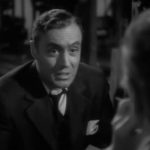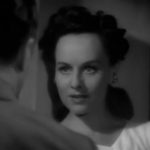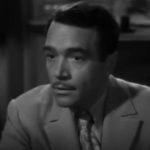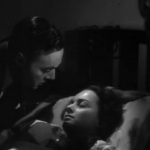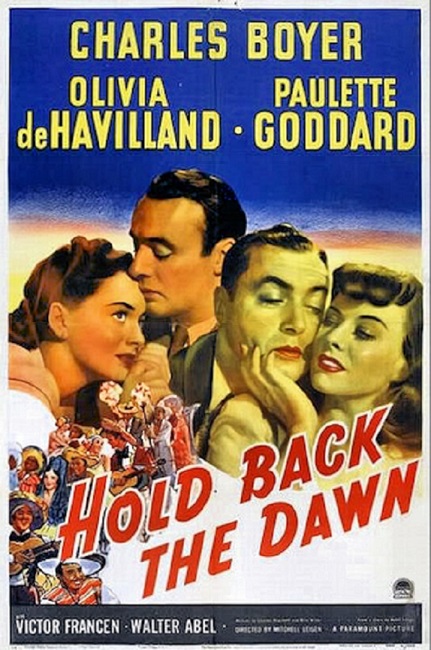
Hold Back the Dawn – 1941
This was an alright movie. It wasn’t bad, but it wasn’t good. It was slightly interesting, and yet painfully predictable. Most of the acting was good, but not all of it. The script was passable, but had some silly moments that tried too hard to be funny, and had me rolling my eyes. It starred popular French actor, Charles Boyer, and the beautiful American movie star, Olivia de Havilland. Their on-screen chemistry was there, but it had moments of weakness.
The movie was about a Romanian gigolo named Georges Iscovescu, played by Boyer, who finds himself in Mexico, wanting to move to America. But immigration laws being what they were, he is put on a waiting list that would likely strand him in Mexico for seven to ten years. He is in a Mexican-American border town where he runs into an old flame named Anita Dixon, played by Paulette Goddard. She is a United States citizen who had once been in a similar situation. Her scheme to gain her a quick citizenship was to marry an American to get into the U.S., then divorce him as soon as possible.
In an effort to follow her plan, he meets a beautiful but naive American school teacher on a field trip with a gang of some of the worst behaved schoolboys in human history. She is Emmy Brown, played by de Havilland. He passionately sweet-talks her and lo and behold, he gets her to marry him within the space of a few hours. Not just engaged, but legally married. After a few hours. But he still has to wait for four weeks for the paperwork to go through before he can cross the border.
While he waits, he and Anita revive their old love affair. U.S. immigration official, Inspector Hammock, played by Walter Abel, is on the prowl, looking for scams and con-artists looking for nefarious ways to make it into the States. He begins investigation Georges and his sham marriage. To make matters more difficult for Georges, Emmy returns to Mexico to spend time with her husband. In order to avoid detection, the Romanian takes his new wife away on a honeymoon trip.
Intending only to avoid the inspector, Georges just drives away, but ends up in a romantic little Mexican village where they are holding a festival to bless newlyweds. Can you guess what happens from here? I could. Georges ends up actually falling for Emmy, but his original scheme is uncovered by Hammock. Emmy wants to leave him, but eventually learns that he is really in love with her. The two reconcile, the marriage becomes real, and after she legally brings him to America, the couple live happily ever after. The end.
I was not wrong, though there were some interesting plot points. Of course, it was a jealous Anita who told Emmy of Georges’ dishonest scheme. And it took a nearly fatal car accident for Emmy to make Georges realize how much he loved her. In desperation, he illegally drives across the border to be with her in her Los Angeles hospital. The laughable police pursuit was ridiculous in that Georges was able to evade the authorities by pulling off the road and hiding behind a ground-level bill-board… twice. And it was his presence at Emmy’s bedside that brought her out of her coma and gave her the will to live.
Is it the worst plot ever conceived? Of course not. But it wasn’t the best either. It was passable. So what aspects of the film stood out as particularly good or bad? On the good side, the filming locations were good. Director Mitchell Leisen got to show off some of Mexico’s natural beauty. Boyer did a good job and carried the lead pretty well. De Havilland looked gorgeous. I also appreciated one of the little sub-plots in which a pregnant woman conned her way onto American soil just so her child could be born an American Citizen. Maybe a little implausible, but interesting enough, though it did portray the border guards as morons.
But on the bad side, the script was often terribly written. Every single character in the film was a walking stereotype. The band of little school boys behaved like a pack of rabid howler monkeys, and the worst they got was a stern look and a mild reproach, even when one of them set off a firecracker in an unsuspecting adult’s hand. Haha!! Second degree burns! Isn’t that funny? Another example of poor writing is how scenes were often ended with a forced joke that had nothing to do with the scene. It was akin to having the actors all freeze to facilitate a commercial break, except here they just made characters throw out lame one-liners to prompt scene changes.
Now, does all that mean I didn’t enjoy the film? No, but it felt like filler. Fluff. There was very little substance to it. No harm, no foul. Just don’t expect anything terribly deep or dramatic. But if you are a fan of Boyer or de Havilland, then this movie will keep your interest easily enough.
